'Back to Black': True Story of Amy and Blake's Relationship
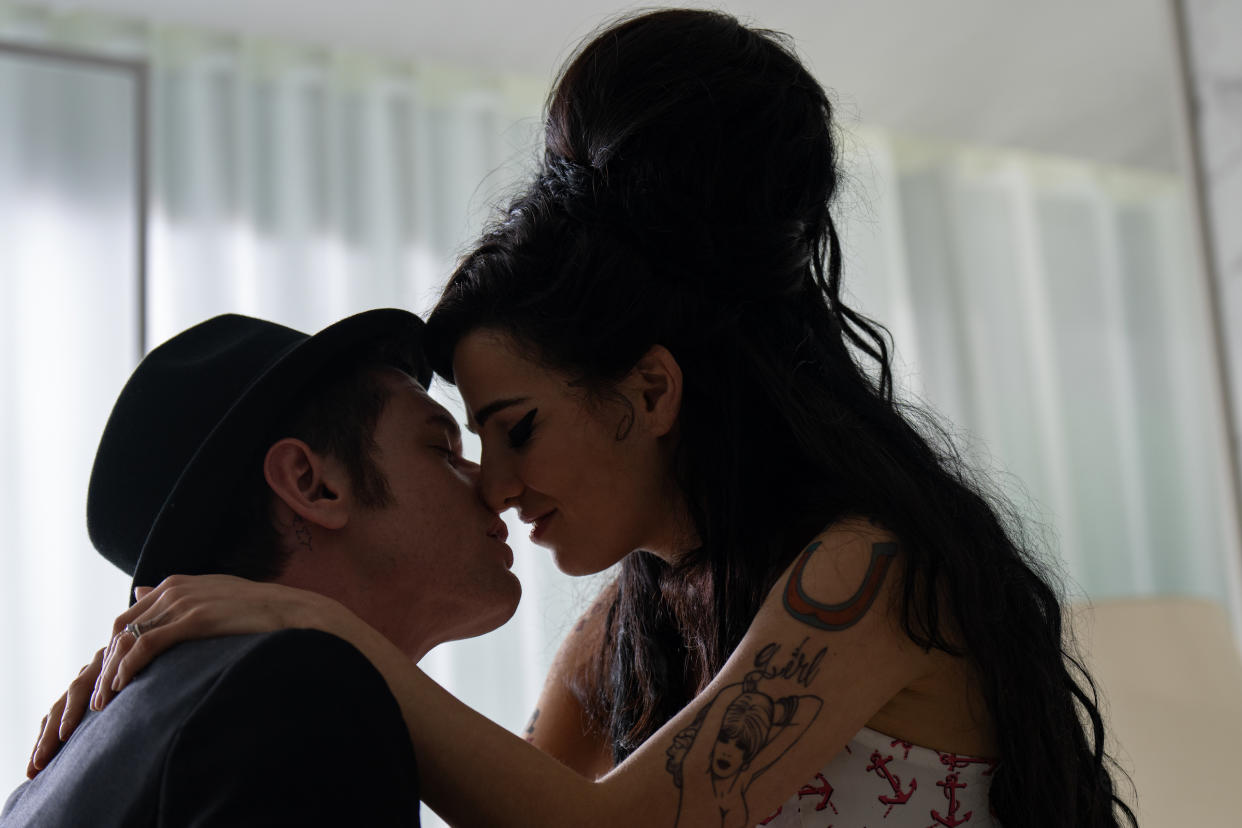
- Oops!Something went wrong.Please try again later.
- Oops!Something went wrong.Please try again later.
Jack O'Connell portrays Blake Fielder-Civil opposite Marisa Abela as Amy Winehouse in the biopic<em> Back to Black, </em>directed by Sam Taylor-Johnson. All three creatives talk to TIME about bringing the story to the big screen. Credit - Courtesy of Focus Features
When Sam Taylor-Johnson signed on to direct Back to Black, she had one main objective. “I wanted people to come out and feel like they got a new insight,” she says from her home in Somerset, England. It’s a task that’s not as simple as it might sound, when you consider the significance of Amy Winehouse’s musical legacy—and, for better or worse, her tragic demise—in pop-culture history. After the success of her 2006 album Back to Black, and during the years leading up to her death from alcohol poisoning in 2011 at the tender (albeit culturally significant) age of 27, Winehouse was cast as the lead character in a story she seemingly had little control over. Her personal life, including her battles with addiction and bulimia, became tabloid fodder, played out in a series of increasingly invasive paparazzi pictures. Winehouse’s tumultuous relationships, or rather one key relationship, took center stage. Enter: Blake Fielder-Civil.
Winehouse and Fielder-Civil met in a pub in the singer’s beloved area of Camden, North London, in 2005. Their romance burned brightly and quickly, at times singeing anyone within reach, with Winehouse cementing her newfound love with a tattoo of his name over a pocket stenciled across her heart. Though a tattoo connotes permanence, Winehouse and Fielder-Civil’s union was less solidified. When their relationship crumbled, Fielder-Civil returned to his ex-girlfriend, and a heartbroken Winehouse poured her grief, despair, and eventual resolve into what would become her seminal, Grammy-winning album, Back to Black.
Read more: A Guide to the Real-Life Figures in the Amy Winehouse Biopic Back to Black
The separation was brief, with the couple later reuniting before eloping in 2007. More break-ups, public rows, declarations of love, and, for Fielder-Civil, prison stays played out, ahead of their eventual divorce in 2011. Throughout it all, the media was clear in its portrayal of the relationship—Fielder-Civil was the villain of the story. This narrative was something Taylor-Johnson was keen to avoid, instead drawing her inspiration from Winehouse’s lyrics on the album after which the film is named. Some viewers may see this as rewriting history, while others might interpret it as simply rewiring the public’s perspective.
TIME spoke with Taylor-Johnson and the film’s lead actors, Industry’s Marisa Abela who portrays Winehouse and Jack O’Connell, who rose to prominence in Brit teen drama Skins and brings Blake to life, for an inside look at their process to bringing the complexity of the relationship to the screen.
Back to Black offers a counter-view of Blake Fielder-Civil
There’s long been contention between Fielder-Civil and Winehouse’s family, friends, and fans, with many pointing the finger firmly at him for her demise. The recovering addict has admitted that he introduced Winehouse to hard drugs. This is depicted in the biopic, which begins with Amy informing Blake that “Class A drugs are for mugs” and progresses to her lighting a crack pipe.
To Taylor-Johnson, this blame game is myopic. “It’s a harsh judgment of addictive behavior without understanding addiction firstly, so I think that’s an important thing to acknowledge,” she notes. When approaching the film, the director (also known for the 2009 John Lennon biopic Nowhere Boy and the 2015 blockbuster Fifty Shades of Grey) was keen to present Blake through Amy’s eyes.
“During Amy’s life, everything was voyeuristically observed and picked apart. It felt like posthumously, that was continuing,” she says. “To justify doing this film, to myself, I had to come back to her music and her perspective. And therefore to look at the relationship of Blake as something that created that music. That made it complex because she was in love, and it was a powerful, intoxicating, and toxic love.”
“I had to look at Blake with love. I had to go towards him through her love. Similarly with her dad, Mitch, who’s also been vilified,” Taylor-Johnson shares, referencing, in part, the unflattering depiction of Mitch (portrayed in this film by Eddie Marsan) presented in the Oscar-winning Asif Kapadia documentary, Amy. Taylor-Johnson notes that while she met with the singer’s parents “to hear their perspective on things out of respect,” she didn’t feel the need for their approval.
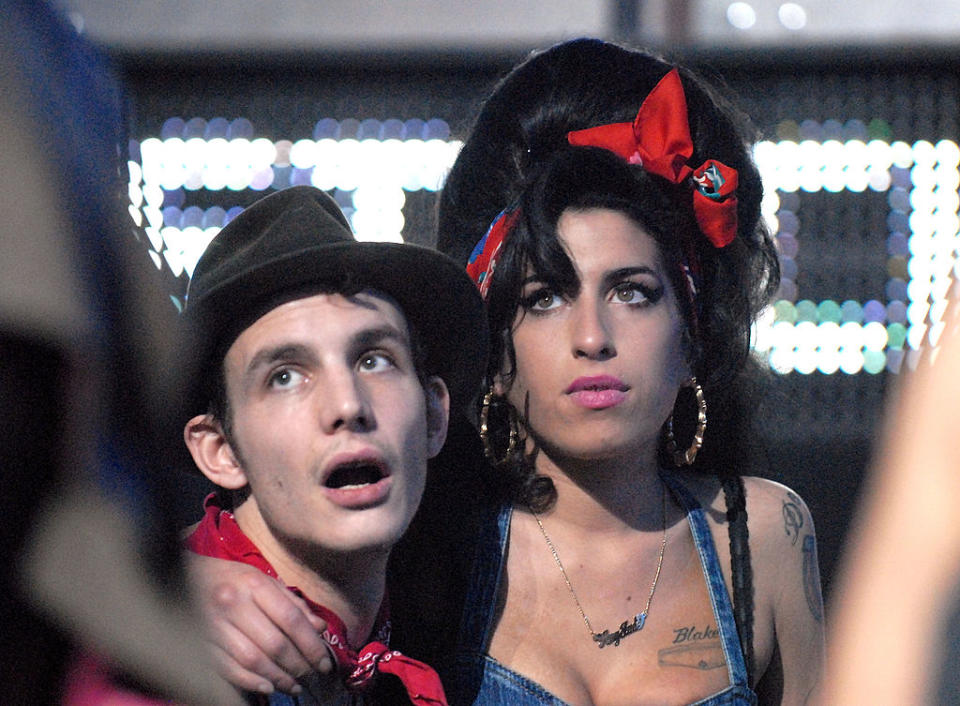
Jack O’Connell went straight to the source
O’Connell—tasked with the challenge of humanizing Blake for audiences—chose to sit down opposite the man himself. “There’s a version of Blake that’s out there, and it’s such an easy narrative to spin. He’s an easy villain to point to in this story. In reality, it’s far more complex,” the actor says, lighting up a cigarette as he talks through his own Back to Black reeducation from a hotel room in New York, noting that Fielder-Civil was a “20-something having his entire life sprawled out in public.”
“Blake has seen the film and loves it. He said some really very moving words and his feedback has been beyond my expectation,” O’Connell shares. “I won’t delve too much into our private conversation, as I don’t want to speak out of turn, but his review was massively important. “
For O’Connell, who at 33 vividly remembers the paparazzi furor surrounding Winehouse and her spouse, Fielder-Civil deserves a break. “I saw someone who whenever he spoke about Amy, even now… he’s so obviously talking about a moment in his life that he cherished, with a person that he cherished, who is no longer with us. You’re pretty stone-f-cking-hearted if you can’t find any compassion for that,” he argues. “He’s a very emotionally intelligent geezer and articulate. Which, for me, was a total blessing and gift.”
Behind the scenes, O’Connell and Fielder-Civil have stayed in touch, with the latter creating a soundtrack to accompany the actor’s filming process. “It was a pretty long playlist, God bless him for that. It was my introduction to the Ramones, finally.”
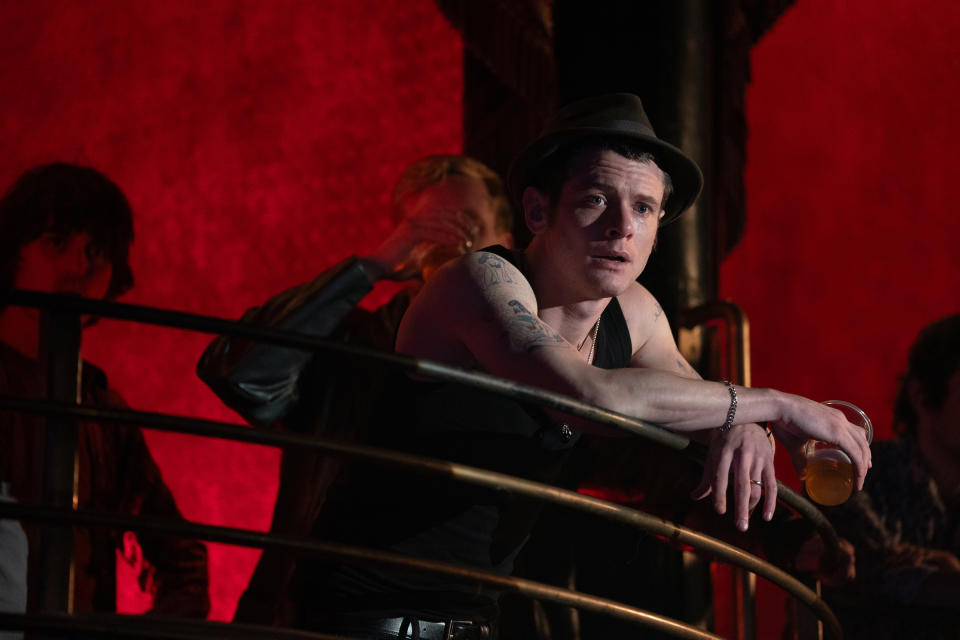
Presenting Amy and Blake as equals
In the U.K. tabloids, Winehouse was often presented as a lovesick, long-suffering partner. Yet the power dynamics at play in the film take a different, more nuanced, approach. Blake undeniably has a hold over the singer. In one memorable scene, Amy quite literally goes running back to Blake—leaving her dad mid-sentence–when he texts her after some time apart. But she’s not portrayed as powerless. Troubling scenes in the film show an inebriated Amy physically lashing out at Blake. Elsewhere, Blake is shown to be insecure about his publicly admired partner potentially leaving him for a famous person, and he worries he’ll be relegated to the role of a groupie.
“One of the most important things for me as a woman filmmaker was not to further victimize Amy. It felt as though her death had been fetishized in a sense and we needed to give her that agency back,” Taylor-Johnson reasons. “I needed to make her what I felt was his equal, so that she could hold her own and right from the beginning.”
Read more: Back to Black Director Sam Taylor-Johnson to Her Critics: ‘I Know What I’m Doing’
As for Abela, 27, recognizing Winehouse’s strength within the story was a key entry point for her portrayal. “There’s something quite captivating about a young woman who is able to say exactly what she thinks and exactly how she feels at any given time, which can be brave, bold, and powerful,” the actor says, hours before attending the U.S. premiere of the film in New York City. “But if that thing is a deeply vulnerable emotion, then it’s, personally, even more brave. The idea of writing a song like 'Love Is a Losing Game' is no less brave than writing a song like 'Stronger Than Me.' One is saying, ‘I could never find a man who could match my energy’ and another is saying, ‘I am hopelessly devoted to someone and it’s ruined me.’ Amy is not afraid to be both. My job was to not sanitize those deeply vulnerable moments."
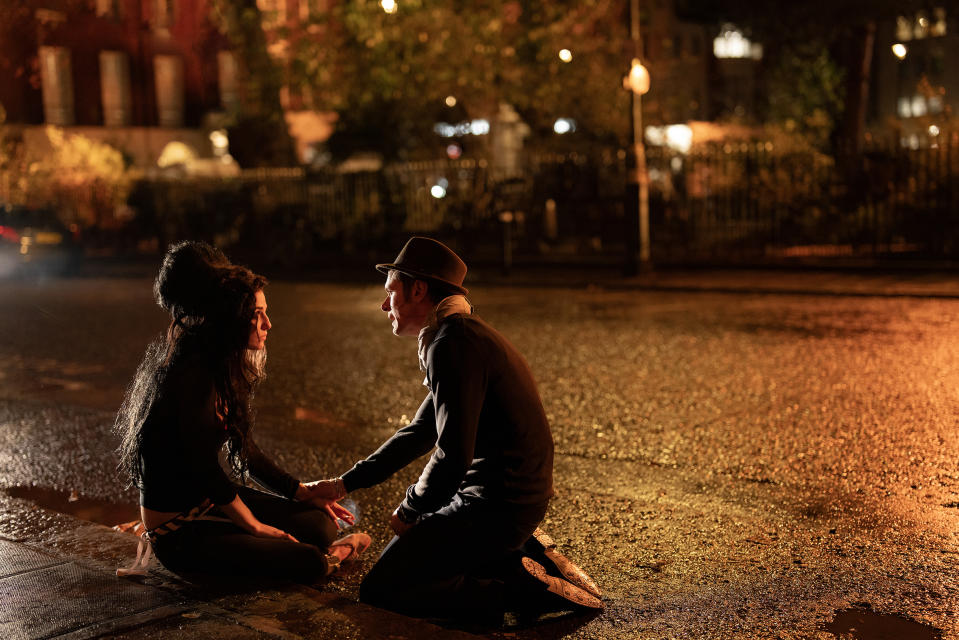
Mirroring Amy and Blake’s first date for the big screen
“One of the most challenging things was the falling in love scene. I felt like I had to get the audience on board then, to put their judgements aside,” Taylor-Johnson says of the make-or-break moment behind the couple’s first on-screen date. The scene was inspired by the reality of their real-life meeting in a Camden pub or “boozer,” as O’Connell affectionately calls it.
“I needed them to be each other’s equals. ‘Have you read this? Have you seen this?’ Then obviously he plays The Shangri-Las [jukebox] bit—and it’s that moment where we all sort of reluctantly let go and fall in love with him,” she continues.
Introducing himself as a video production assistant, who is between homes and “sofa surfing,” we see a contemplative Blake tell Amy that he likes to “sabotage” himself. She’s intrigued.
“Jack was brilliant. He’s so fearless and doesn’t care about playing someone liked or not liked,” Taylor-Johnson explains.
Of the pivotal first meeting at the bar, Abela says: “As the audience, you really feel like you’re leaning into something that’s about to happen. I remember Sam saying to us, ‘Remember what it’s like when someone accidentally brushes by you and you fancy them so much?’ All of those things help… you don’t have much time in a movie to create a first feeling. That night would have been hours and hours for Amy and Blake, and we have a few minutes.”
Abela immersed herself in research. “When you think about a lot of epic love stories, they are often tragedies. Whenever someone loses their own sense of independence and autonomy, because what’s important is how this other person makes them feel… I think that’s kind of what happened. They just became one person. I read letters between Amy and Blake that literally spoke about, ‘We are one beating heart and no one will ever understand how intense a love this is!’”
In real life, aside from love letters, Winehouse often showed her devotion to her partner by wearing Blake-labeled hair accessories and changing the words to songs during on-stage performances to incorporate Fielder-Civil’s name.
Some U.K. critics expressed the view that Blake gets off too lightly in the film. Winehouse’s childhood best friend and adulthood confidante Tyler James says the film has got much of the singer’s life “wrong.” But both Taylor-Johnson and O’Connell are adamant they pay no mind to the reviews.
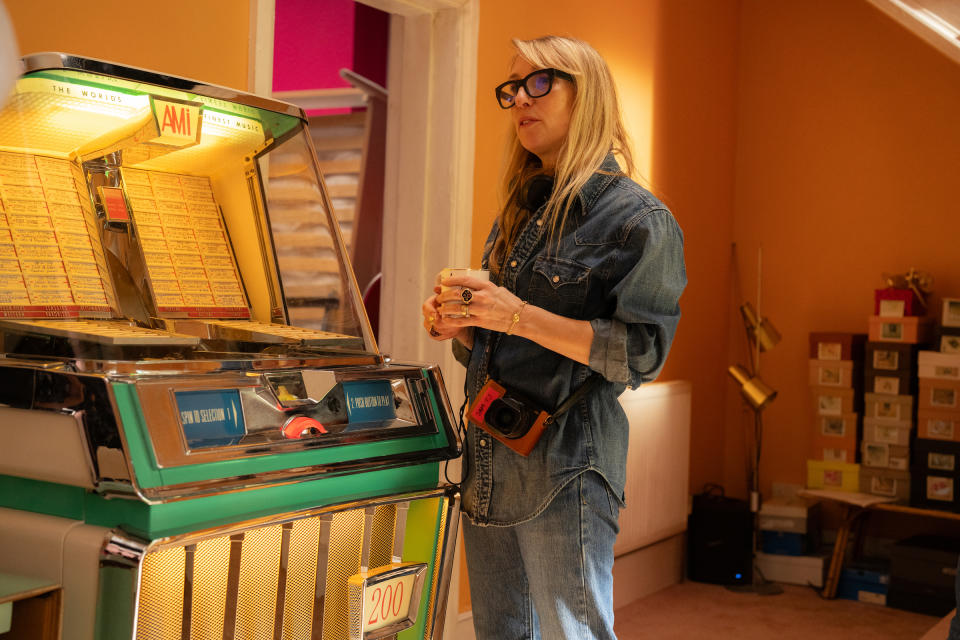
How the paparazzi and addiction disrupted the couple's lives
Taylor-Johnson stands firm that “addiction and paparazzi are the two main villains” of the biopic. It’s a sentiment O’Connell echoes. There was a full-circle, life imitating art moment during the biopic, when real-life paparazzi surrounded the set as Abela and O’Connell were filming on the streets of London.
“I don’t agree with that type of press. I think it’s quite immoral and it was an opportunity to kind of display that. The irony of us having real modern-day paparazzi try and infiltrate our set under the guise of our (acting) paparazzi, just to do the same sh-t,” O’Connell bemoans. “It served as an indicator for the type of person she was having to come up against. There’s so much footage out there of Amy being as charming and as non-abrasive as possible with these people who were just out to get her, let’s face it.”
For Abela, it was also a humbling reminder that there is still so much progress to be made in terms of how people in the public eye—young women, in particular—are treated by the tabloids.
“I had been playing those paparazzi moments almost like a period piece. Thinking of those days of Britney [Spears], Princess Diana, and Amy, and the appetite that society had for images of those young women. It made me realize that it’s still a universal truth that we are fascinated by young women and we don’t have much sense of collective responsibility for their safety,” Abela says. “People like to think that if Amy were alive today they would have treated her with more respect, but I wasn’t sure after coming out of those experiences.”
When it comes to the villain of addiction, some might view the on-screen Amy as being addicted not just to drugs and alcohol but to Blake. O’Connell considers this. “I’m very hesitant to diagnose any conditions, and careful with what terminologies I use, but Blake uses the term ‘toxic co-dependence’ and I can sort of buy into that,” he says. “All the good that it brings and all the bad.”
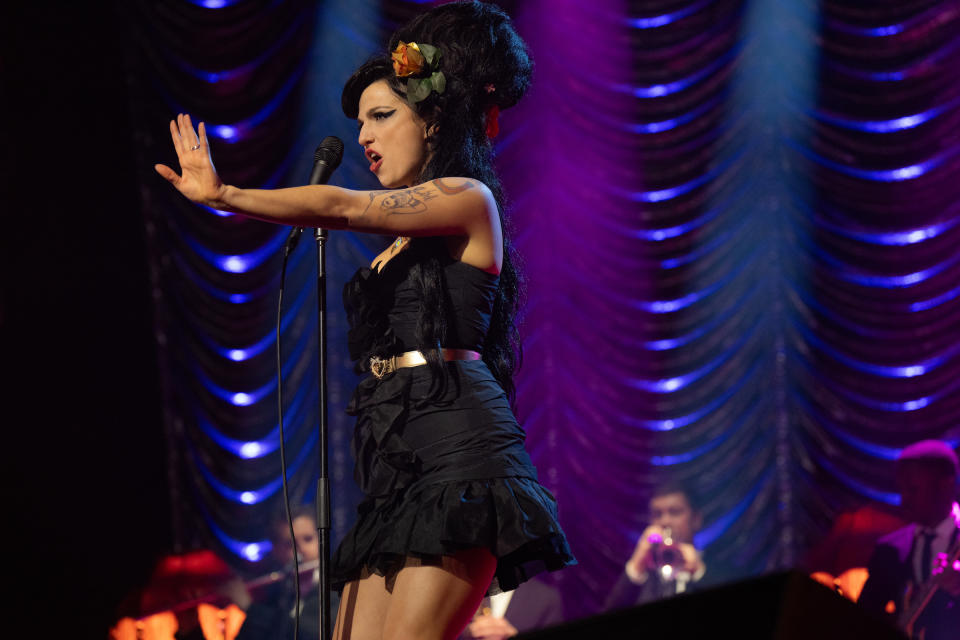
The final curtain
In the closing scene, we see Amy unpacking at her new house, alongside her dad, Mitch. When she walks him out, the paparazzi abruptly inform her that Blake is expecting a baby with his new partner. Amy heads back inside, and the final shot shows her alone, singing the first lyric of her song “Tears Dry On Their Own” to herself: “It’s my responsibility, you don’t owe nothing to me.” The film ends with Amy walking up the stairs, before leading to post-credit cards reminding us of when her real-life counterpart died. It’s a curious note to end on, forgoing any mention of Winehouse’s life post-Blake. In reality, the musician went on to find love again, enjoying a relationship with Reg Traviss, who worked in the film business. It was Traviss who attended Winehouse’s funeral in 2011, grieving alongside her family.
For Taylor-Johnson, it was pivotal for the film to end alongside its namesake record, rather than taking viewers beyond the album’s timeline, though it was not always a foregone conclusion. “There were talks of, and not from me, but talks of whether we should have real-life footage of Amy at the end. Should we see the real-life vigil? But I was really adamant [not to]. You often watch biopics, and then they sort of flash up all the real-life footage and if you’ve gone on a journey trying to convince the audience that this is Amy Winehouse, and then you flash up the Amy Winehouse, you’re sort of saying to the audience, ‘But now look at the real one and compare!’ And I never wanted that comparison,” she explains.
“Somebody has mentioned Blake again, and Amy’s back in the headspace of him. She looks at her Blake tattoo and we’re back in the pain of that. That needs to be the final moment before those end cards. But I did spend over a month with my editor on the last two or three minutes of the film. We’d literally change it around every other day like, ‘This isn’t working.’ Until we landed. Then it just felt so obvious that we needed Amy to pause and reflect and [the audience] to pause and reflect. If we were to go the next step and go through that door with her… it felt wrong. So we just elegantly let her go.”
Write to Olivia-Anne Cleary at olivia-anne.cleary@time.com.

